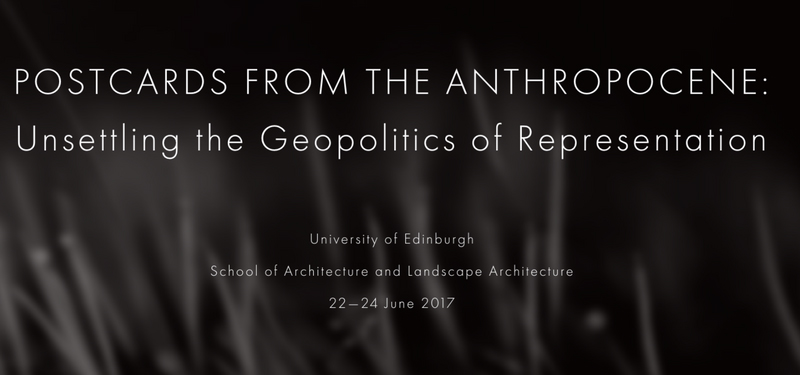Symposium: “Postcards from the Anthropocene”
Federico Ruberto presents “Form and Matter: (de)Signs Between Control and Contingency” at the symposium “Postcards From the Anthropocene: Unsettling the Geopolitics of Representation”, organized Benek Cincik & Tiago Torres-Campos.
Edinburgh_Federico Ruberto presents “Form and Matter: (de)Signs Between Control and Contingency”. A short talk built upon: a critique of ontological “necessity”, of “nature” as the invariant cradle of certainty; a critique of functional parametricism, of the “mantra of efficiency”, of the “hyper-normal” (that swallows internalizing the exception/mistake), of design as the field of managerial objectivity; perhaps, a critique of objectivity tout court, as an unconscious means for feeling ontologically grounded; a critique of technocratic control, of the architectural ideology that believes that radical change is made through “intensity” and “differentiation”. A critique but also a proposal for rethinking the act of signification, for thinking fiction and speculation via the act of de-sign: the “meaningless sign” that slips in the meshes of signification (three forms of “outside”: the “kenotype” in Meillassoux, the schizo in Deleuze, the empty signifier in Laclau…), the sign that produces difference and not differentiation.
The presentation analyzes the crossbreeding of analog and digital signs in relation to the concept of chance; topological openness.
-In the first part it focuses on the language of contemporaneity: planetary scale computation. It describes the complex knot where subjectivities make and are made, in which they are controlled and control through numbers. A place where a systemic enumeration of probabilities and possibilities is subjecting ideas to the dominion of numbers, transforming the concept of chance, the emergence of non-countable, the Event. Through algorithms contemporaneity has gained in complexity, precision, production, efficacy, performance, but at the same time it has in part accepted that what is non-numerable is not discussable.
-The second part correlates two semiotic domains analyzing their implicit performances. De-sign is taken in the splintering grip of two processes-languages; the trace and the code. In this context then rethinking the signifying act requires analyzing a semiotic trauma, a necessary operation because contemporaneity seems designed to adhere, to be subjected to the logic and the probabilistic-count of global capitalism; this is what we object.
-The third part explains indexing and meshing, modes to design analog and digital admixtures, translations and projections between the delaminated and networked layers of information, agents and ubiquitous interfaces. Tools for working upon the heterogenous and the multiple, the global and the local, devices for selecting elements and for wiring semiotic heterogeneities. Syntaxes for conceiving infra-structural connections, for pro-gramming intrusions in the domains of algorithms, protrusion into the space we call objectivity: for fabricating through algorithms such objectivity. Navigational instances to explore the system’s complexity and to treat representation as material presentation, pro-jection; to rethink the territory, its hybrid analog and digital syntaxes, matter made of fields of multiplicities, of discrete traces.
More info at CNTXT
